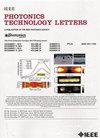Indoor Visible Light Tilt-Resilient Positioning Based on RSS Fingerprint Self-Transferability
IF 2.3
3区 工程技术
Q2 ENGINEERING, ELECTRICAL & ELECTRONIC
引用次数: 0
Abstract
In this letter, we propose a tilt-resilient positioning method based on received signal strength (RSS) fingerprint self-transfer learning to solve function failure or a reduction in the accuracy of the indoor visible light positioning (VLP) system under tilt receiving and to improve its practicability and reliability in the actual environment. Based on the modified path loss (PL) exponent model, the vertical RSS fingerprints can self-transfer to the tilted RSS fingerprints of arbitrary receiving direction (RD) in the online stage. The constructed tilted RSS fingerprint databsae have the same granularity and dimension as the vertical RSS fingerprint database, making the proposed method have the capability of rapid learning and positioning while completing RSS fingerprint self-transfer. The simulation results show that the proposed method achieves a higher positioning accuracy compared to the other three methods without adding the labor and time costs of RSS measurement caused by the multidimensionality of the RD at each fingerprint point. In the case of dense and sparse light-emitting diode (LED) distributions, when the receiver tilt angle is 31°, the root mean square errors of the proposed method are approximately 4.21cm and 3.52cm in the 10cm基于RSS指纹自转移性的室内可见光倾斜弹性定位
本文提出了一种基于接收信号强度(RSS)指纹自传递学习的倾斜弹性定位方法,以解决倾斜接收下室内可见光定位(VLP)系统功能失效或精度下降的问题,提高其在实际环境中的实用性和可靠性。基于改进的路径损耗指数模型,在在线阶段,垂直方向的RSS指纹可以自传递到任意接收方向的倾斜RSS指纹。所构建的倾斜RSS指纹库与垂直RSS指纹库具有相同的粒度和维数,使得所提出的方法在完成RSS指纹自传递的同时具有快速学习和定位的能力。仿真结果表明,与其他三种定位方法相比,该方法具有更高的定位精度,且不增加由于每个指纹点的相对相对度的多维性而导致的相对相对度测量的人工和时间成本。在密集稀疏的发光二极管(LED)分布情况下,当接收机倾斜角度为31°时,该方法在10cm × 10cm网格尺寸下的均方根误差分别约为4.21cm和3.52cm,平均定位误差分别约为3.09cm和2.43cm。
本文章由计算机程序翻译,如有差异,请以英文原文为准。
求助全文
约1分钟内获得全文
求助全文
来源期刊

IEEE Photonics Technology Letters
工程技术-工程:电子与电气
CiteScore
5.00
自引率
3.80%
发文量
404
审稿时长
2.0 months
期刊介绍:
IEEE Photonics Technology Letters addresses all aspects of the IEEE Photonics Society Constitutional Field of Interest with emphasis on photonic/lightwave components and applications, laser physics and systems and laser/electro-optics technology. Examples of subject areas for the above areas of concentration are integrated optic and optoelectronic devices, high-power laser arrays (e.g. diode, CO2), free electron lasers, solid, state lasers, laser materials'' interactions and femtosecond laser techniques. The letters journal publishes engineering, applied physics and physics oriented papers. Emphasis is on rapid publication of timely manuscripts. A goal is to provide a focal point of quality engineering-oriented papers in the electro-optics field not found in other rapid-publication journals.
 求助内容:
求助内容: 应助结果提醒方式:
应助结果提醒方式:


